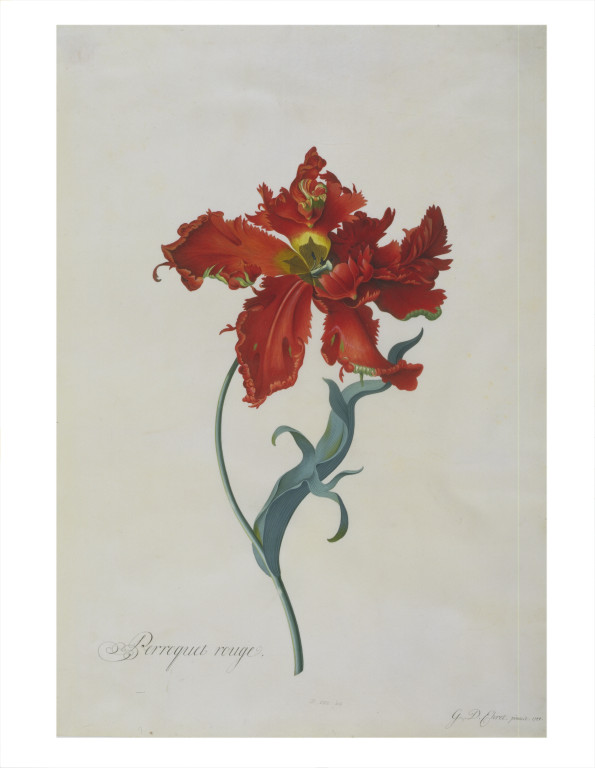Georg Dionysius Ehret:
By Kyle Harvey
Georg Dionysius Ehret was a botanist and entomologist. Born
in early 18th century Germany, Ehret took an apprenticeship with a
gardener, his uncle, at a young age. He combined his love for drawing and painting, as learned from his father, and combined this with his knowledge from his apprenticeship. From there he became one of the most prominent and
influential botanical artists of his time. His earliest works date back to the
1730’s and he continued his art through his death in 1770. Gerta Calmann author
of Ehret: Flower Painter Extraordinary noted
that “the greatest difficulty for this author, who is not a botanist, has been
to explain the role which Ehret has played in the history of botany: his
drawings give a true likeness if many exotic, mainly American” (1977, 9).
Ehret’s precise attention detail allowed him to create life-like drawings,
paintings, and prints that would eventually played a key role in the
identification of plants. Carl Linneaus often cited Ehret’s published
illustrations. Calmann adds that “Ehret was the first to provide the botanical
world with Linneaus’s ‘sexual system’ of botanical classification in a graphic
form” (1977, 9). His work was extensive and detailed; There are known to be
some 3,000 of his drawings and paintings in collections.
Ultimately, I chose Georg Dionysius Ehret because I like
Germans and thought his art to be particularly intriguing through his use of detail
and color. His work not only documented foreign species but also helped
scientific discovery regarding these new plants. Integrating art with science
is interesting on many levels.
 |
| Bull Bay (Magnolia grandiflora L.) 53cm x 36.5cm. Body color on vellum, signed. 1743 |
 |
| Mourning Iris (Iris susiana L.) 47cm x 33.5cm. Body Color on vellum, signed. 1765 |
 |
| Parrot Tulip 'Le Perroquet rouge' (Tulipa gesneriana L.). 53cm x 37.1cm. Body color on vellum, signed. 1744 |
Each of these works highlights Ehret’s mastery attention to
detail which makes each of the flowers seem nearly real. The print on the left
is entitled “Bull Bay (Magnolia
grandiflora L.)” and is being displayed in the print room of the Victoria
and Albert Museum in London, England. This piece is particularly admirable to
me because of Ehret’s ability to manipulate tones to produce such a dynamic
contrast that adds to the depth and overall composition of the piece. The piece
in the center is title “Mourning Iris (Iris
Susiana L.).” This one in particular highlights is immense precision and
accuracy in his art. Although it may be hard to see on a computer screen,
within the drawing all the smallest details, from the pattern on the petals to
the tiny hairs coming off them, come together to make a beautiful flower. His
use of green on within the white and red petals as a sort of contrast was an
interesting choice that really adds to the work. Lastly, the work on the right
is called “Parrot Tulip ‘Le Perroquet rogue’ (Tulipa gesneriana L.)” this piece uses vibrant colors and precise
detail to elevate the painting. Also on display in the Victoria and Albert
Museum, this painting is just 53cm x 37.1cm. His control over the brush just to
be able to get such small details is notable in itself. The small lines that
contour the petals and leaves are some of the most impressive details.
References:
Calmann, Gerta. 1977. Ehret, flower painter extraordinary. Boston: New York Graphic Society.
Ehret, Georg Dionysius, and Victoria and Albert Museum. 1987. Ehret's flowering plants. New York: Harry N. Abrams.

No comments:
Post a Comment